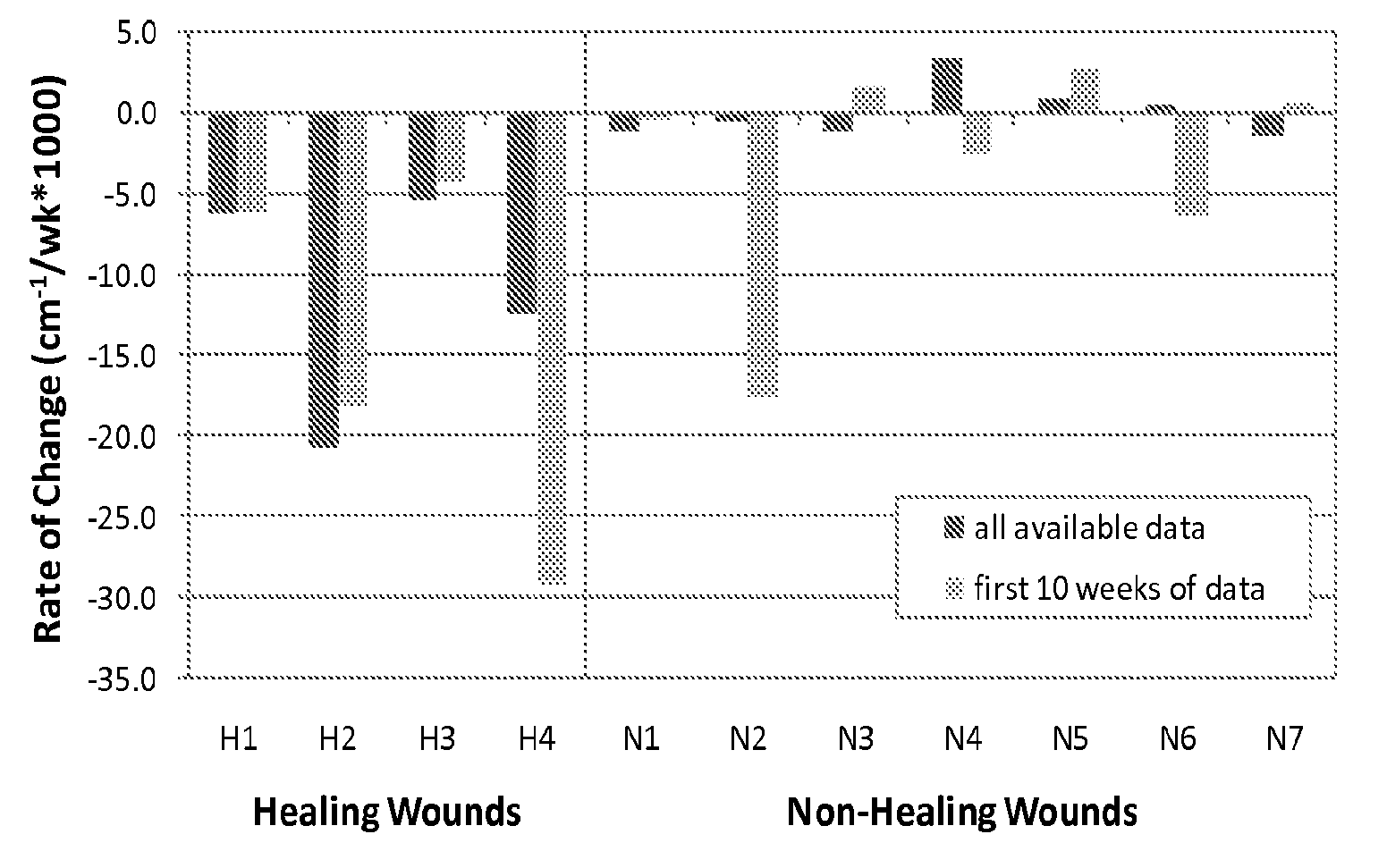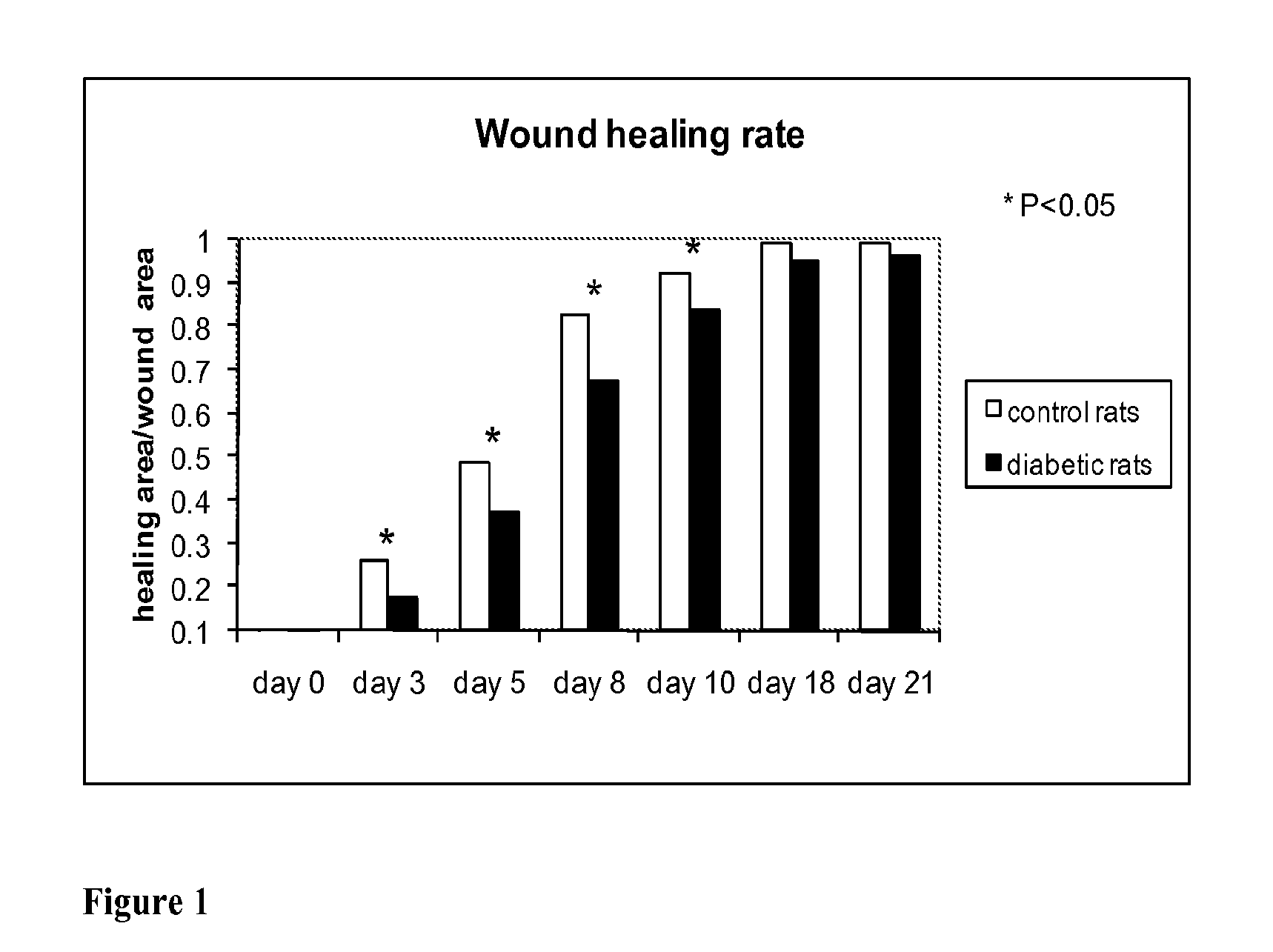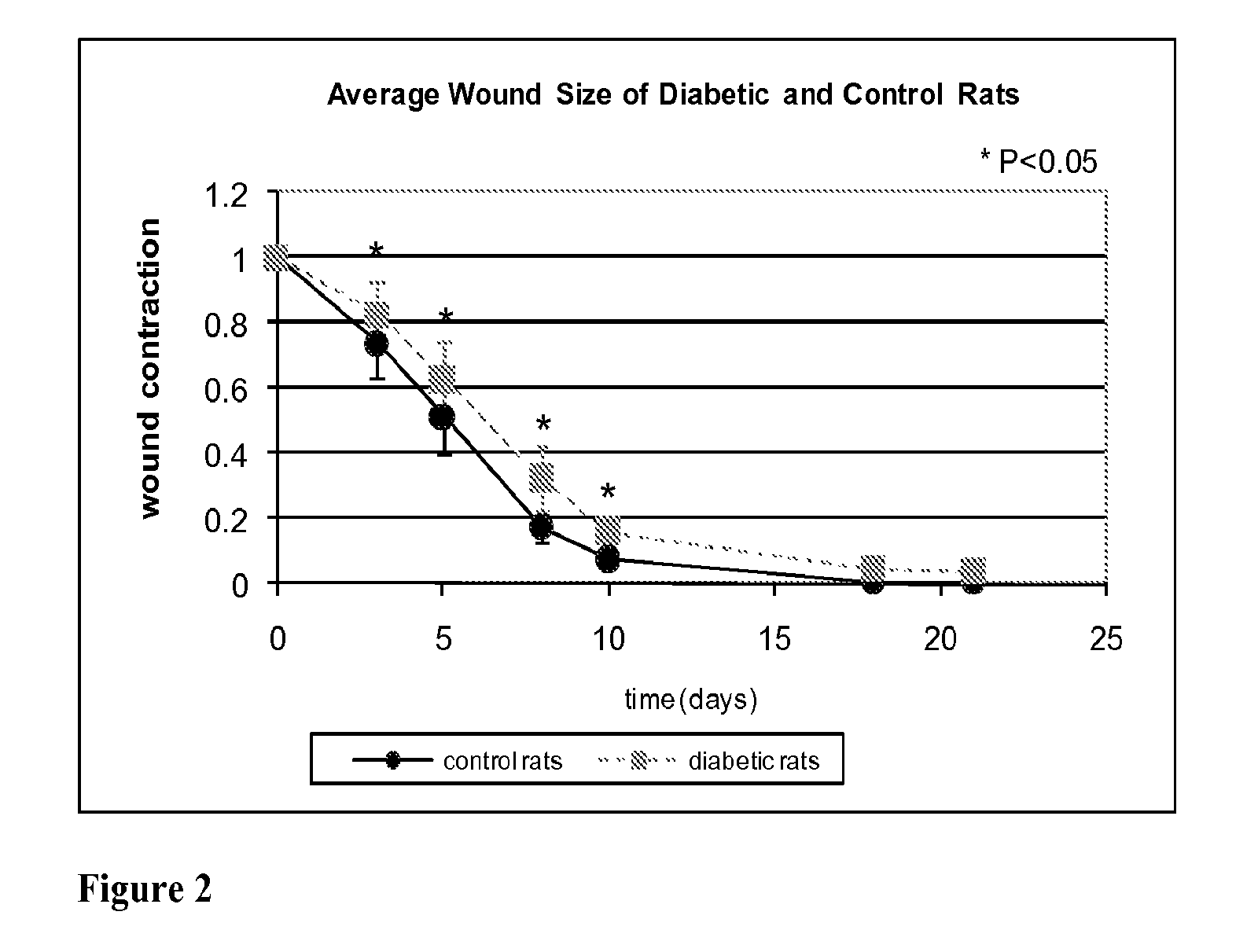Methods of optically monitoring wound healing
a technology of optical monitoring and wound healing, applied in the direction of angiography, diagnostics using spectroscopy, instruments, etc., can solve the problems of incomplete wound healing, incomplete wound healing, and incomplete wound healing, so as to reduce the scattering coefficient
- Summary
- Abstract
- Description
- Claims
- Application Information
AI Technical Summary
Benefits of technology
Problems solved by technology
Method used
Image
Examples
Embodiment Construction
[0059]A detailed description of illustrative embodiments of the present invention will now be described with reference to FIGS. 1-36. Although this description provides a detailed example of possible implementations of the present invention, it should be noted that these details are intended to be exemplary and in no way delimit the scope of the invention.
Monitoring Surface of Wound to Collect Data Regarding Healing State of Wound
Material and Methods
[0060]A frequency domain diffuse optical tomography instrument developed by the School of Biomedical Engineering at Drexel University was used to non-invasively measure the optical properties of tissue at depths up to several millimeters. The instrument includes four laser diodes (685, 785, 830, and 950 nm) controlled by an optical switch, four avalanche photodiode detector channels, and a radio-frequency (RF) generator that modulates the laser output at a frequency of 70 MHz. The device measures the amplitude and phase shift of light as...
PUM
 Login to View More
Login to View More Abstract
Description
Claims
Application Information
 Login to View More
Login to View More - R&D
- Intellectual Property
- Life Sciences
- Materials
- Tech Scout
- Unparalleled Data Quality
- Higher Quality Content
- 60% Fewer Hallucinations
Browse by: Latest US Patents, China's latest patents, Technical Efficacy Thesaurus, Application Domain, Technology Topic, Popular Technical Reports.
© 2025 PatSnap. All rights reserved.Legal|Privacy policy|Modern Slavery Act Transparency Statement|Sitemap|About US| Contact US: help@patsnap.com



